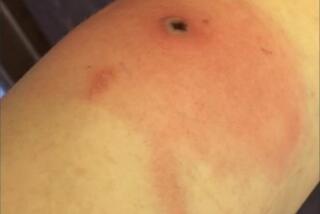A Big Game in Alaska
- Share via
It was a long day’s journey into day when I flew from San Diego to Fairbanks. It was, in fact, the longest day of the year.
From a California dawn I headed north and west to the midnight sun of Alaska. It was that giddy time in June when baseball games--played without lights--get under way at 10:30 p.m. and picnics and barbecues follow.
As I waited for my suitcase I scanned Fairbanks’ airport. The wall about the luggage carrousel was lined with mounted heads of big game: moose, caribou, bear and the mountain sheep called Dall.
‘Taken’ Animals
They were mighty in size. What struck me most was the wording on the signs by each one. These animals were “taken,” not shot. It seemed so friendly. “Moose taken by Joe Blow. . . .” “Grizzly taken by. . . .”
“Here, moose. Here, bear,” I imagined. It sounded as if they might be released after a while. It had a more sporting ring than: “Moose hunted, shot, and you guessed it, killed by. . . .”
There also was a king salmon that had been “taken,” a tribute to the taxidermist’s art.
Hunting and fishing are major sports in Alaska, but I traveled north to do neither. I went to see Denali National Park and the bold white face of Mt. McKinley, the highest peak in North America.
I went to laze through wilderness on the Alaska Railroad in the spacious new dome cars of the Midnight Sun Express that roll between Fairbanks and Anchorage.
I went in search of calving glaciers and white-water thrills. I went to smell the spruce and hear the cry of the magpie.
Of course I wanted to see moose and bears, caribou and Dall sheep, but I wanted to see more than their heads. I wanted to see them roaming free in the 6 million acres of Denali Park. I wanted wildlife, not still life.
At Fairbanks’ Sophie Station Hotel, not far from the University of Alaska, I admired hanging baskets of giant petunias in pink and plum and white. The growing season is short, but lush because of round-the-clock daylight.
A University of Alaska student was still vacuuming my room when I arrived at 5 p.m. “Be through in a minute,” she called, as a cool fresh breeze swept through. I stared from the balcony as she finished, and saw another hint of Alaskan big game: the hotel’s sun deck had orange umbrellas shading white tables, each of which was centered with an orange can of Cutter Insect Repellent.
From what I had heard about Alaskan mosquitoes, I wondered why one was not mounted on the Fairbanks airport wall. Perhaps one has never been “taken.”
Big lands tend to support big legends; armed with Cutter, I happened to encounter not a mosquito during my stay. Natives said that was a record.
On that first evening in Fairbanks I went to dinner because the clock said it was time, not because it seemed late enough as judged by the pink-blue sky, or the sun, burning bright as a marigold.
Before a salmon feast at the Pump House restaurant on a bend of the Chena River I lingered on the wooden deck and stared at float planes tied near the forest’s edge.
Daredevil Pilots
Two red-and-white jet boats careened downstream, trailing plumes of spray. Their drivers, sleek in wet suits and helmets, performed daredevil turns.
“They’ll be at it for hours,” an Alaskan said. “They can’t drive snowmobiles all year, you know.”
In shadows near the Pump House entrance I suddenly faced my first grizzly. He rose 9 feet, 3 inches tall, with massive shoulders and claws. He was fearsome, yet majestic. He barely fit into the glass case.
The bear was shot by Sherron Perry with the help of Tom Kilfoyle and Mark Nutt, according to a sign. It happened on Larson Bay of Kodiak Island on Oct. 29, 1980.
That seemed a more honest report.
That bear could not have been “taken,” not without some fight.
More to Read
Sign up for The Wild
We’ll help you find the best places to hike, bike and run, as well as the perfect silent spots for meditation and yoga.
You may occasionally receive promotional content from the Los Angeles Times.






